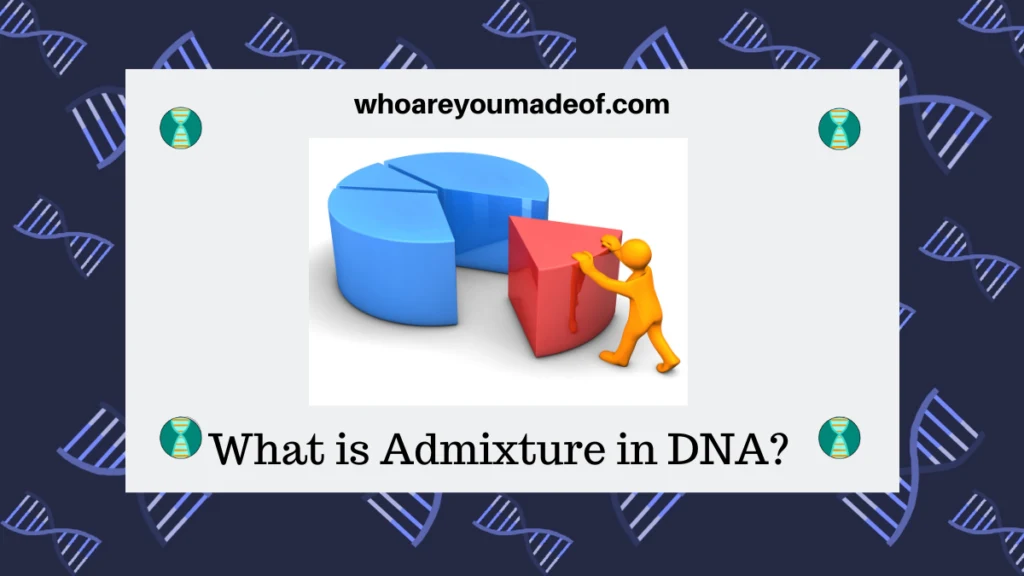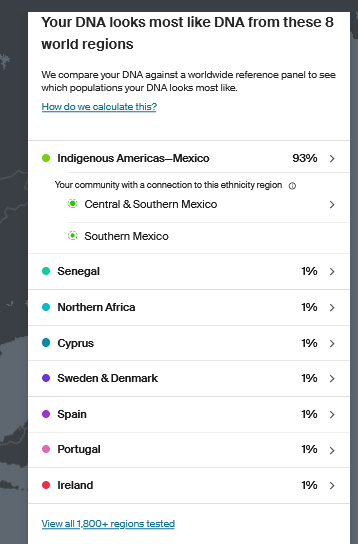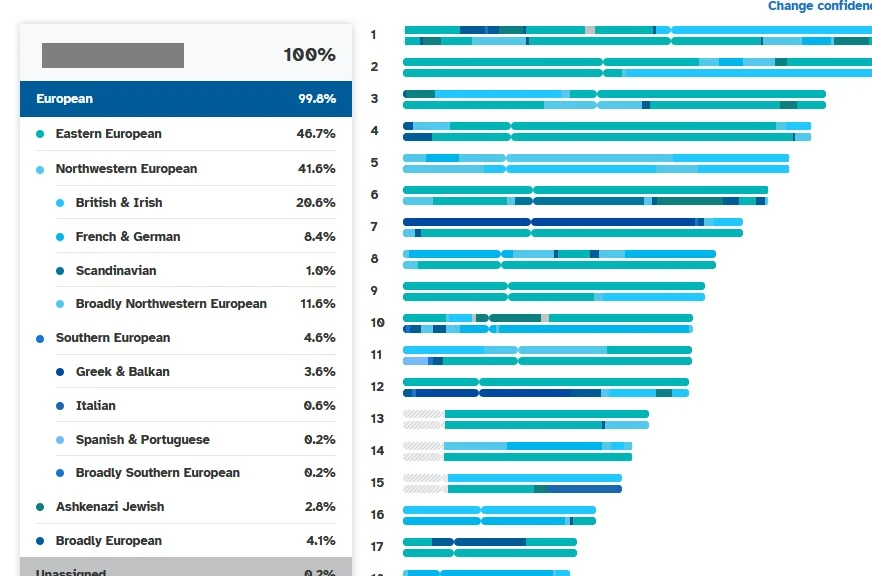Have you ever heard the term "admixture" used in reference to DNA? In this post, learn what is meant by admixture in DNA testing.

The world of DNA testing is filled with terms that most of us would not typically use on a daily basis. In fact, it all might seem downright unfamiliar.
One very commonly discussed term is "admixture". This word is sometimes used in scientific and construction settings, and while the meaning is similar, it's also different.
What is the the meaning of admixture in DNA?
Genetic admixture happens when people from human populations that had previously been isolated from each other come together and have children. This has the benefit for our species of creating additional genetic diversity, and also creates a lot of fun research for the descendants of the people who came together to create new families.
For example, if someone whose ancestors lived only in Scotland going back a dozen generations has a child with someone whose ancestors lived only in Peru for a dozen generations, admixture has occurred. Generally speaking, people with ancestry in Peru and Scotland have historically been isolated from each other due to geography.
Of course, the descendants of this hypothetical Peruvian and Scottish couple could take DNA tests to learn about their admixture, which is also sometimes referred to as ethnicity or ancestral background. They would then have a very interesting genealogy project to work on while building a family tree filled with their ancestors from Scotland and Peru.
Does admixture really matter?
All humans are almost identical from a genetic perspective. I always imagine that if we ever encountered alien species, they would have a hard time telling us apart from each other because to every other species on our planet, at least, a human is a human.
Only the tiniest, most minuscule variations in our DNA make us different than every other human, even our closest relatives. These very small differences varying degrees of significance when it comes to gene expression, but overall we are more the same than we are different.
When it comes to admixture in the genealogical world, our interest in it is related to how the study of our unique admixture can help us learn about where our ancestors lived. Studying our family's past can help us feel more rooted and connected with our sense of self.
People have always been interested in learning about who they are and, if applicable, where their family came from. Genealogy has been popular around the world for hundreds, if not thousands of years.
What is admixture analysis?
Using some very complicated scientific analysis, DNA testing companies and researchers have been able to analyze their customers DNA to determine which regions of the world they most closely match. The results of this analysis are typically reported in percentage form, with a portion of the person's DNA matching all of the regions on their results.
What do genetic admixture tests determine?
The exact term that describes this process is biogeographical ancestry analysis. The top DNA testing companies can determine with surprising accuracy where our ancestors likely lived going back hundreds, to perhaps maybe a thousand years.
As I mentioned before, humans are almost 100% identical. Therefore, the admixture analysis is performed on the tiny differences in our DNA in order to tell us where our ancestors lived.
DNA testing companies compare each section of your DNA to reference panels developed from DNA data from people who have long family histories in each region to determine your results.

On 23andMe, you can download a file that shows you the exact location of DNA segments that match all of the regions on your Ancestry Composition Report. The image above shows that this person has one DNA segment only Copy #2 of Chromosome 6 that matches the Congolese and Southern East African region.
What is an example of genetic admixture results?
DNA testing companies report admixture results, also known as ethnicity or ancestry estimates, using a percentage format. The list of percentages are usually from greatest to least, and indicate which regions of the world most closely match the DNA that you inherited from your ancestors.
The image below is of an admixture estimate, called an ethnicity estimate on Ancestry DNA, for someone (my husband!) who was born in Mexico. As you can see, 93% of his DNA matches Indigenous Americas - Mexico region

He has smaller percentages matching Senegal, Northern Africa, Cyprus, Sweden & Denmark, Spain, Portugal and Ireland. Most likely these smaller 1% regions were inherited from more distant ancestors, since people from all over the world have settled in Mexico over the past 500 years.
The image below is from my mother's 23andMe results, which are called "Ancestry Composition Reports" on 23andMe. According to these admixture results, about half of her ancestors came from Eastern Europe and the other half came from other parts of Europe, primarily Northwestern Europe.

My mother also has DNA matching smaller regions on her results. For example, she has 4.6% Southern European DNA, which includes 3.6% matching the Greek and Balkan region, as well as 2.8% Ashkenazi Jewish ancestry.
It is often these smaller regions that pique our interest, since we usually, but not always, are aware of where most of our ancestors came from.
Where to get a genetic admixture test
If you have already taken a DNA test like the one offered by Ancestry or 23andMe, then you like already have access to detailed genetic admixture analysis results. However, most people have not already tested their DNA.
The only companies that I would recommend for genetic admixture testing are 23andMe, Ancestry, MyHeritage, and Family Tree DNA. These companies have good testing procedures, offer reliable results, and give you access to a long list of genetic relatives, known as DNA matches.
You can read more about and find links to these tests, which are also known as autosomal DNA tests here:
Conclusion
I hope that this post has helped you learn all that you needed to know about admixture in DNA, admixture analysis, and where to get a genetic admixture test. If you have any questions about something that you read in this post, or if you would like to ask a question about admixture testing, please join in the discussion below.
Thank you for stopping by today!
